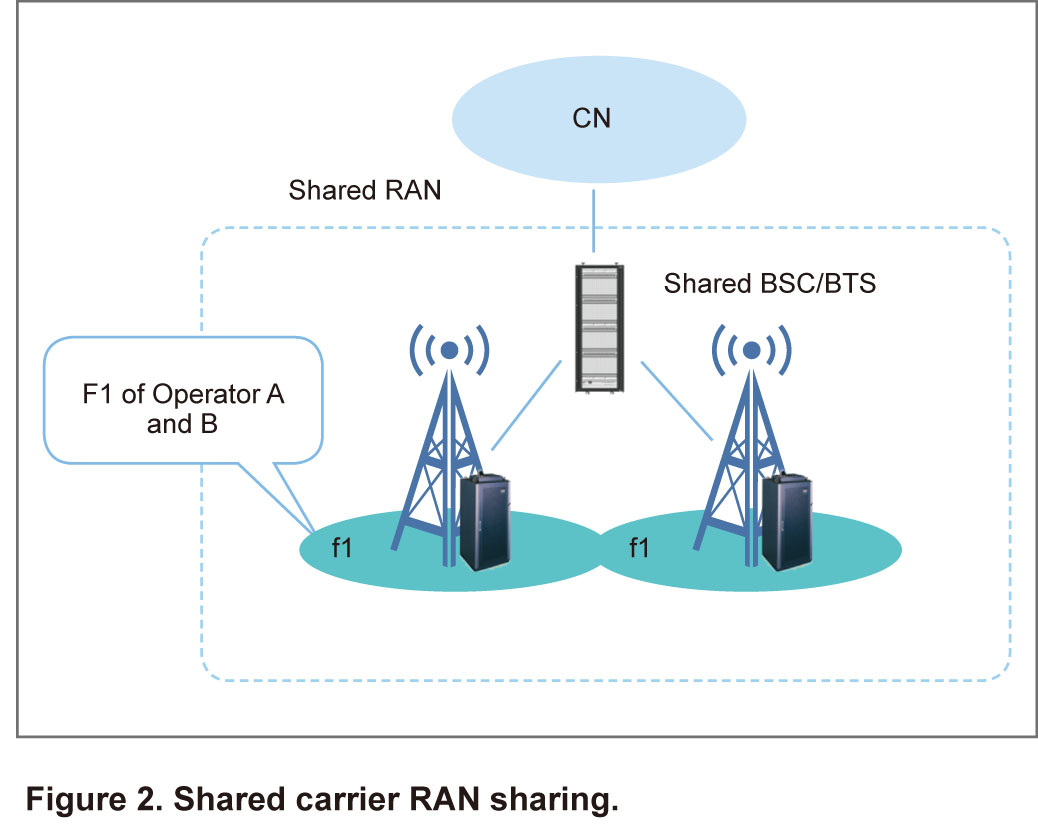Deeper RAN Sharing, Deeper Win-Win
Today the world is facing all kinds of crises, such as the financial crisis, the environmental crisis, and the energy crisis. As all the crises deeply influence the telecom industry, no one can stand outside of them ― Incumbent operators are worried about the continued decline in ARPU, higher OPEX and the risk to introduce new services; emerging operators do not have budget to deploy new networks, especially the RAN with huge CAPEX; governments and telecom regulators find it difficulty to issue new licenses to encourage competition; and consumers hope to access more value-added services at lower fees. All of us are not quite satisfied with the current telecom environment, but how could we do?
Deeper network sharing, especially the RAN sharing, gives us an opportunity to change the telecom industry into a deeper win-win model. Network sharing can have the following benefits:
■ Save network OPEX and up to 40% of CAPEX on infrastructure equipment;
■ Offer a new resource of revenue for incumbent operators;
■ Remove market barriers for new operators;
■ Shift the focus of competition from network deployment cost to service innovation;
■ Accelerate network deployment, especially in rural areas;
■ Help to build a green network and reduce negative environmental impact.
Although network sharing has many attractions, the challenges we have to face are:
■ How to share network resources such as frequency spectrum, BTS, BSC, tower, and transmission facilities between operators;
■ How to operate and maintain the shared network;
■ How to independently deliver new services over the shared network;
■ How to allow the access of pre-R6 UE to the shared network without message routing overload;
■ How to achieve seamless mobile management;
■ How to display the operator’s logo on pre-R6 UE.
As a leading global provider of telecom equipment, ZTE can offer flexible network sharing solutions to meet the various market and customer requirements. All solutions are compliant with the 3GPP specifications and used in open, multi-vendor environments. The innovative solutions ZTE has developed can better address the above challenges.
Generally, there are two main forms of RAN sharing: dedicated carrier RAN sharing (logic BSC/RNC) and shared carrier RAN sharing.
The dedicated carrier RAN sharing mode shown in Figure 1 allows physical sharing of RAN and a logical division of carriers. It is independent of terminals, which means that operators can have their own subscribers and brands, while subscribers do not know whether the network is shared or not. The operators can broadcast independent PLMN IDs on their own carriers, while the UEs only need to access CN of the home operator. As the shared BSC/RNC can be connected to other shared BSCs/RNCs or non-shared BSCs/RNCs, normal handover can be performed between BSCs/RNCs of the same operator to ensure seamless connection. This mode allows operators to independently deploy services in the shared network. For example, the operator running high-speed services can launch HSPA+, while another operator running mobile TV can deploy MBMS on its dedicated carrier. Even if they both operate the same service, they can configure different parameters for the service and thus have different radio performance. Furthermore, the operators can conduct independent configuration and maintenance of their own cells, such as collection of statistics on cell performance, fault management, and security setting, so that their business secrets may not be disclosed.

Due to its simplicity in operation, the dedicated carrier RAN sharing mode has prevailed in recent years. In contrast, the shared carrier RAN sharing mode, a deeper sharing mode that can provide high spectrum efficiency is more complicated and not selected by many operators and vendors.

The shared carrier RAN sharing mode is shown in Figure 2. In ZTE's solution, a shared NetNumen™ M31 (EMS) provides all O&M functions:
■ RNC/BSC cell level configuration including network hardware and transmission facilities;
■ RNC/BSC site level software upgrade and status query;
■ RNC/BSC site level FM and PM.
The NetNumen™ M31 supports independent NMS interfaces that help operators manage their own networks.
ZTE’s BSC/RNC can provide access control, call control and load balance control based on the operators’ QoS level.
■ The system resource can be distributed to the operator of higher priority;
■ The service priority can be defined separately for each operator.
Therefore, operators can negotiate to set different priorities in launching different services or the same service with different performance.
In addition, the solution supports Shared Network Area (SNA). CN can send the SNA and LA mapping table to RNC. After the UE attachment procedure, the mapping between SNA and Temporary Mobile Subscriber Identifier (TMSI) is sent to and stored in RNC. In this way, seamless mobility management can be achieved in the handover and location update process.
With abundant experience in terminal production, ZTE can provide solutions to the problems brought by pre-R6 UE which does not support the 3GPP network sharing protocol, and has developed an innovative solution to decreasing the message routing load.
Facing the deeper crisis in the telecom industry, operators worldwide start to make use of the huge potential and advantages of deeper RAN-sharing. Global tier-one operators such as Vodafone, Orange, T-Mobile and Optus have showed their great interest in the RAN-sharing solution. They are actively performing tests on RAN-sharing, or even require that RAN-sharing be a feature for network admission, especially in Europe.
As a world leader in mobile communications, ZTE can offer deeper RAN-sharing solutions that allow up to four operators to share the same RAN network simultaneously. The deeper RAN-sharing solution will lead the telecom industry towards a win-win model capable of satisfying the needs of equipment vendors, operators, subscribers, and even governments and telecom regulators.